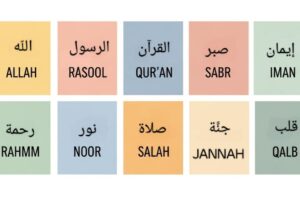
The Significance of the Hijra: Lessons from the Prophet’s Migration to Madinah
The Hijra, or migration of Prophet Muhammad (PBUH) and his companions from Makkah to Madinah, stands as one of the most pivotal moments in Islamic history. This event marked the beginning of a new chapter for the Muslim community, transforming Islam from a persecuted belief into a flourishing, organized faith. Beyond its historical impact, the Hijra provides timeless lessons about faith, perseverance, sacrifice, and the importance of unity.
In this blog post, we will explore the story of the Hijra, its significance in Islamic history, and the key lessons we can draw from this extraordinary event.
The Background: Persecution in Makkah
In the early years of Islam, the small but growing Muslim community in Makkah faced severe persecution. The Quraysh, who held political and economic power in the city, saw Islam as a threat to their way of life and their influence. Prophet Muhammad (PBUH) and his followers were subjected to physical abuse, social boycotts, and economic hardship. Yet, despite these challenges, the Muslims remained steadfast in their faith.
The breaking point came when the Quraysh plotted to kill the Prophet. In the face of this danger, Allah commanded the Prophet to leave Makkah and migrate to a place where Islam could grow freely: Yathrib, later known as Madinah.
The Journey of Hijra: A Leap of Faith

The Hijra was not a simple relocation; it was a monumental journey that required immense faith and trust in Allah. The Prophet Muhammad (PBUH) and his closest companion, Abu Bakr (RA), embarked on this journey under the cover of night to avoid detection by the Quraysh. They sought refuge in the Cave of Thawr for several days, evading their pursuers. Despite the fear and uncertainty, they placed their full trust in Allah’s protection.
Lesson 1: Trust in Allah During Difficult Times
One of the most profound lessons of the Hijra is the importance of tawakkul, or trust in Allah. Despite the life-threatening circumstances, the Prophet’s calm reliance on Allah’s plan teaches us how to maintain faith in times of difficulty. In today’s world, when we are faced with challenges, the Hijra reminds us that with patience, faith, and perseverance, Allah’s help is near.
The Brotherhood of Madinah: A Model of Unity
Upon arriving in Madinah, the Prophet established a unique sense of brotherhood between the emigrants (Muhajirun) and the local inhabitants (Ansar). The Ansar welcomed the Muslims with open hearts, offering them homes and resources to start a new life. This unity laid the foundation for the first Muslim community and set an example of solidarity that transcended tribal and cultural differences.

Lesson 2: Unity and Brotherhood Are the Strength of the Ummah
The unity between the Muhajirun and Ansar is a model of how Muslims can come together, support one another, and create strong communities. This brotherhood, based on shared faith rather than ethnic or tribal ties, teaches us the importance of putting aside differences and working together for the greater good of the Ummah.
The First Islamic State: Justice and Governance
In Madinah, Prophet Muhammad (PBUH) established the first Islamic state, rooted in justice, equality, and mutual respect. One of his first actions was drafting the Constitution of Madinah, which outlined the rights and responsibilities of all citizens, including Muslims, Jews, and other religious groups. This document ensured that all individuals, regardless of their background, were treated fairly under Islamic law.
Lesson 3: Justice is Central to Islam
The governance of Madinah demonstrates the importance of justice in Islam. Prophet Muhammad (PBUH) ensured that all citizens were treated with respect, regardless of their faith or social status. Today, this teaches us the significance of fairness, inclusivity, and justice in building a just society, both in our personal and collective lives.
Sacrifice for a Greater Cause
The Hijra was a tremendous sacrifice for the early Muslims. They left behind their homes, families, and possessions, driven by their devotion to Allah and the message of Islam. Despite the hardships they faced, the Muhajirun made this sacrifice for a higher purpose: to establish a society based on the teachings of Islam.
Lesson 4: Sacrifice is Essential for Success
The sacrifice of the early Muslims teaches us that success, whether spiritual or worldly, often requires giving up personal comfort for a greater cause. Whether it’s dedicating time for prayer, contributing to community projects, or standing up for justice, the Hijra reminds us that sacrifice is a key component of achieving success in this life and the Hereafter.
Conclusion: The Legacy of the Hijra
The Hijra is more than just a historical event; it is a story of faith, sacrifice, and unity that continues to inspire Muslims around the world. It marks the beginning of the Islamic calendar and symbolizes the resilience of the Muslim community. As we reflect on the Hijra, we can draw valuable lessons about trusting Allah, supporting one another, and striving for justice and peace in our own lives.
Let us remember that, like the early Muslims, we too can overcome challenges and build a better future by holding fast to our faith and working together in unity.




3 Comments
The charming message
It is remarkable, rather valuable information
It is remarkable, very valuable phrase